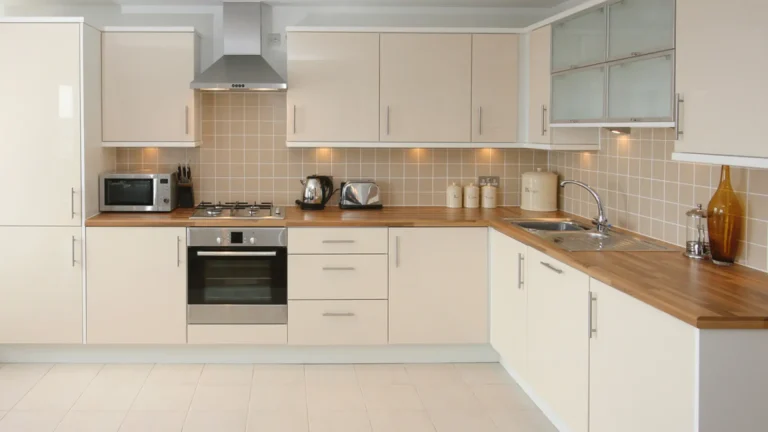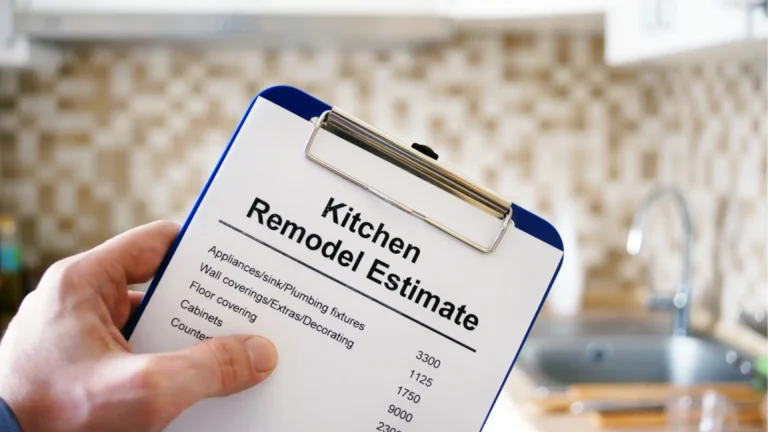How To Plan A Kitchen Remodel: A Comprehensive Guide [2024]

The kitchen, often referred to as the heart of the home, is where meals are prepared, memories are made, and stories are shared. It’s no wonder that remodeling the kitchen is one of the most popular home improvement projects undertaken by homeowners. A well-planned kitchen remodel can not only enhance the beauty and functionality of your space but also significantly increase the value of your home. But how to plan a kitchen remodel?
This guide will walk you through everything you need to know about planning a kitchen remodel, from deciding whether to refresh or remodel to choosing the right contractor for the job.
Should You Remodel Your Kitchen or Just Refresh It?
Before diving into the world of kitchen remodeling, it’s essential to distinguish between a full remodel and a simple refresh. A remodel involves extensive changes, possibly including new layouts, structural adjustments, and significant updates to fixtures and appliances. On the other hand, a refresh might just mean some new paint, hardware updates, or replacing countertops.
Consider your budget, the current condition of your kitchen, and your long-term plans for your home. If your kitchen’s layout and functionality no longer meet your needs, or if the space feels outdated, a full remodel might be warranted. However, if you’re generally satisfied with your kitchen’s layout and function, a refresh could give it a new lease on life without breaking the bank.
How Much Will It Cost to Remodel a Kitchen?
The cost of remodeling a kitchen can vary widely based on factors like size, location, and the materials and finishes you choose. On average, homeowners can expect to spend anywhere from $12,000 to $35,000 or more for a full kitchen remodel. It’s crucial to understand where your money will be going. Cabinetry and labor are typically the most significant expenses, followed by appliances, countertops, and flooring.
To get a clearer picture of potential costs, break down your project into its components and research average prices in your area. Remember, choosing high-end finishes and appliances can quickly inflate the overall cost.
How to Budget for the Kitchen Remodel?
Budgeting for a kitchen remodel requires a balance between your dream kitchen and what you can realistically afford. Start by setting a clear budget that includes a buffer of at least 10-20% for unforeseen expenses. Then, prioritize your spending based on what matters most to you—whether that’s high-end appliances, custom cabinets, or durable countertops.
To stretch your budget further, consider which aspects of the remodel you can DIY and where you can save by choosing more cost-effective materials without compromising on quality. Always get multiple quotes from contractors to ensure you’re getting a fair price.
Design Tips for Kitchen Remodel
When it comes to designing your remodeled kitchen, functionality should be your top priority. Think about the ‘work triangle’—the layout of your sink, stove, and refrigerator—to ensure efficient use of space. Also, consider the overall style of your home and aim for a kitchen design that complements it.
Incorporating timeless elements into your kitchen design can help ensure your remodel remains stylish and valuable for years to come. opt for classic color schemes and durable materials, and personalize the space with unique touches that reflect your style.
How to Choose the Best Kitchen Remodeling Contractors?
The right contractor can make or break your kitchen remodel. Look for someone with extensive experience in kitchen remodeling, a portfolio of completed projects, and positive reviews from past clients. Licensing and insurance are also non-negotiable to protect yourself during the remodel.
Communication is key, so choose a contractor you feel comfortable with and who understands your vision for the project. Don’t hesitate to ask for references and to compare bids before making your final decision.
Best and Cost-Effective Kitchen Layouts
Choosing the right layout is crucial for a functional and aesthetically pleasing kitchen. Popular layouts include the L-shaped, galley, and U-shaped kitchens, each offering different benefits depending on your space and needs. Consider the flow of traffic, the amount of storage and counter space you require, and how you plan to use the kitchen.
Smaller kitchens might benefit from a galley layout, which maximizes space efficiency, while larger spaces can accommodate an island for additional workspace and storage.
Most Common Kitchen Remodel Mistakes to Avoid
One of the biggest mistakes in kitchen remodeling is underestimating the budget. Always plan for unexpected expenses by including a financial cushion in your budget. Prioritizing aesthetics over functionality is another common pitfall; your kitchen’s design should first and foremost support its use as a functional space.
Finally, neglecting the workflow can lead to a kitchen that looks good but is frustrating to use. Pay careful attention to the placement of appliances and work areas to ensure a smooth cooking and prep process.
FAQs
Conclusion
Remodeling your kitchen is a significant undertaking, but with careful planning and consideration, it can be an incredibly rewarding experience. Take the time to thoroughly research and plan your project, from budgeting and design to selecting the right contractor. With the right approach, your new kitchen will not only meet your current needs but also add value and beauty to your home for years to come.






